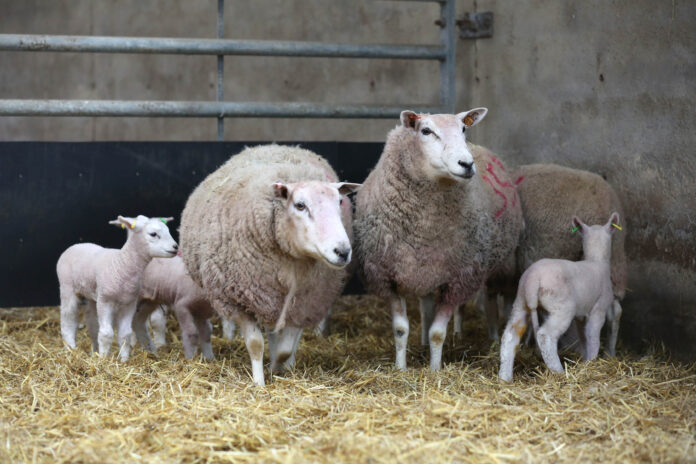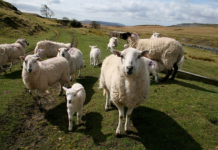
MILTON KEYNES, UK, 27th February 2024 – More than 30% of GB sheep flocks don’t know their barren ewe rate or are reporting a figure greater than 5% after lambing.
This concerning finding comes from an on-line survey of 966 sheep flocks conducted by MSD Animal Health (a division of Merck & Co., Inc., Rahway, N.J., USA (NYSE: MRK)) during January 20241.
“We’d advise any sheep farmer experiencing a barren ewe rate greater than 2% to discuss their flock health situation with their veterinary professional – and to rule out any potential underlying disease cause,” said MSD Animal Health livestock veterinary adviser Dr Kat Baxter-Smith.
In the survey, 27% of farmers reported a barren rate of 2-5% with only 42% meeting the accepted industry target of fewer than 2% ewes barren.
Dr Baxter-Smith also encouraged sheep farmers to work with their veterinary professional to diagnose any causes of abortion during the 2024 lambing season. According to the January 2024 survey feedback, a third of farmers do not investigate abortions.
“Encouragingly, over 45% of the survey sample said they do consult their vet if abortions occur and have them investigated immediately. And a further 21% tag any barren or aborting ewes for blood testing after lambing. This is what we would recommend.”
Ewe reproductive failure, neonatal lamb disease and mortality are the three biggest factors limiting better flock productivity2 – with toxoplasmosis and enzootic abortion continuing to be significant causes of these unwanted flock heath issues. Consequently, MSD Animal Health has now launched its subsidised 2024 FlockCheck diagnostic scheme, which allows farmers in England, Scotland and Wales to blood test their flock for exposure to toxoplasmosis and enzootic abortion (EAE).
Dr Baxter-Smith said that all farmers have to do is ask their veterinary professional to take blood samples from six to eight aborted, unvaccinated ewes, or from barren ewes or ones that have produced weakly lambs.
“The blood test has proved to be an extremely useful flock diagnostic tool in terms of helping to identify the potential presence of any key underlying productivity limiting disease. Experience has shown that the results certainly help vets and their farmer clients make more informed decisions about appropriate flock health measures.”
Annual FlockCheck blood test results consistently demonstrate that a significant proportion of the aborted ewes tested have been exposed to either toxoplasmosis or EAE – and sometimes both. For example, 2023 blood test results from more than 3,700 ewes showed 77% of 526 sheep farms had been exposed to toxoplasmosis and 17% to EAE3; with 13% of farms showing evidence of exposure to both pathogens. This is consistent with a recent APHA analysis showing that between 2002 and 2019, toxoplasmosis and EAE have been the most common diagnoses of sheep abortion3.
According to Dr Kat Baxter-Smith, both these infectious causes of abortion can be responsible for reducing the number of lambs per ewes mated, which can increase workload and stress during lambing. Profit may also be reduced significantly4, she stressed, but using FlockCheck can help in improving a flock’s potential and overall economic performance.
“For example, toxoplasmosis, caused by infection with the Toxoplasma gondii parasite, does not just cause abortion. It is also the main infectious cause of early embryo loss in sheep and a very common cause of barren ewes or weak, sickly live lambs. It is likely that almost all flocks in Great Britain have been in contact with this endemic parasite, which means all breeding sheep should be considered at risk.”
Dr Baxter Smith also explained that one of the main reasons for such high levels of toxoplasmosis is that sheep can become infected very easily.
“Sheep pick up the toxoplasma parasite from the environment and so normal biosecurity measures are not enough to control the disease. Infected cats shed toxoplasma eggs in their faeces and sheep become infected when they ingest these eggs from contaminated pasture, feed and water. The eggs are tough and can survive in the environment for over a year, which means farmers need to take steps to protect their sheep.
“Fortunately, the disease can be controlled effectively by a simple vaccination regime. What’s more, the costs of a vaccination programme can be easily covered by a reduction5 in future flock barren and abortion rates. In reality, every ewe should be vaccinated before she breeds because of the widespread disease threat and the significant financial losses,” she said.
The subsidised FlockCheck diagnostic service allows veterinary practices to identify whether toxoplasmosis or EAE (or both) are likely to have been involved in any aborted lamb losses, barren ewes or numbers of weak, sickly lambs. This aids the decision for (and identifies the potential value of) pre-tupping vaccination programmes.
Sheep farmers interested in taking advantage of this subsidised industry support from MSD Animal Health to help reduce the risk of lower productivity, should contact their local veterinary professional as soon as possible. This year’s FlockCheck scheme opened on 1st February 2024.
Help keep news FREE for our readers
Supporting your local community newspaper/online news outlet is crucial now more than ever. If you believe in independent journalism, then consider making a valuable contribution by making a one-time or monthly donation. We operate in rural areas where providing unbiased news can be challenging. Read More About Supporting The West Wales Chronicle
























